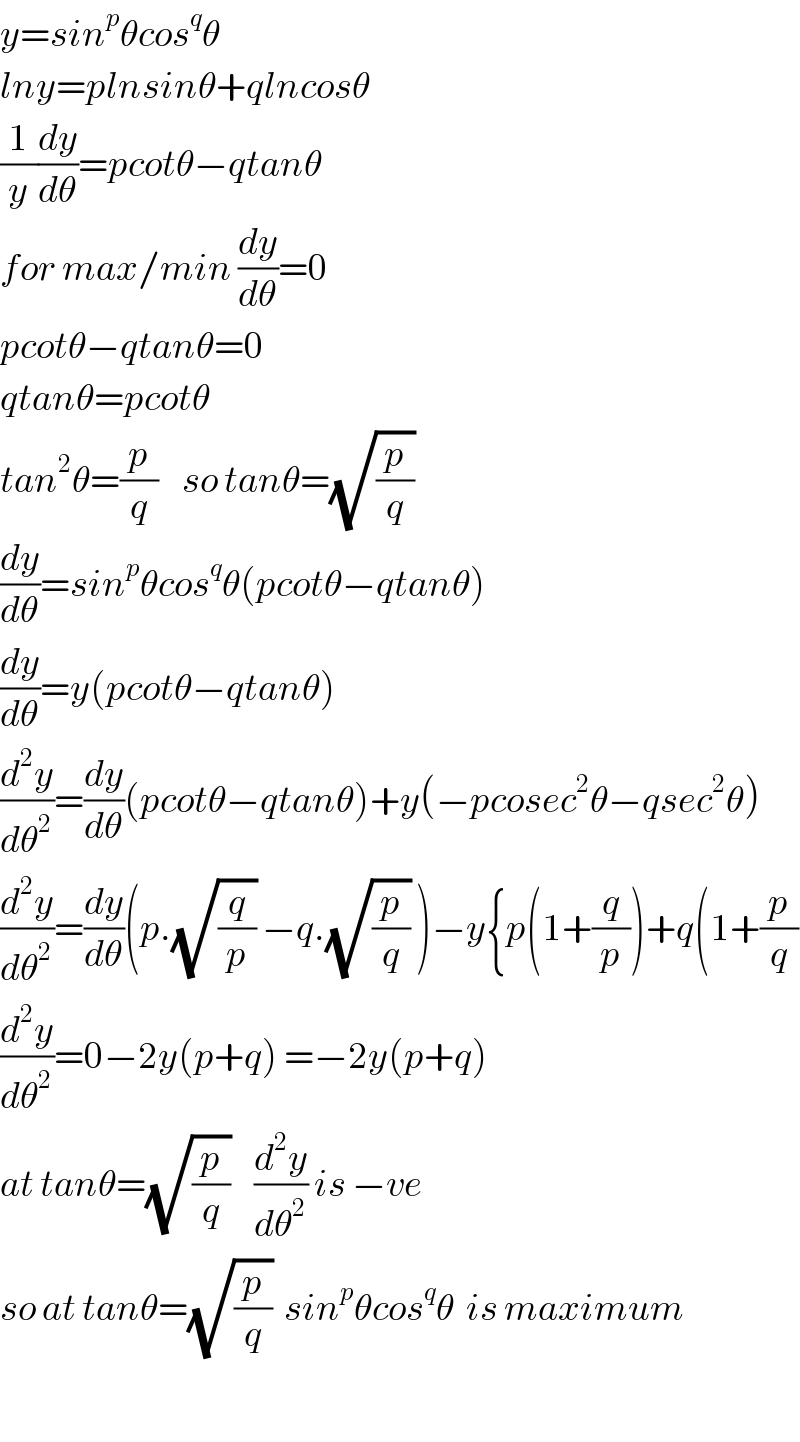
Question and Answers Forum
Question Number 40277 by Raj Singh last updated on 18/Jul/18

Answered by MJS last updated on 18/Jul/18
![(d/dθ)[sin^p θ cos^q θ]=sin^(p−1) θ cos^(q−1) θ (pcos^2 θ −qsin^2 θ) zeros at sin θ =0 ⇒ θ=2nπ cos θ =0 ⇒ θ=(2n+1)(π/2) pcos^2 θ −qsin^2 θ =0 pc^2 −qs^2 =0 p(1−s^2 )−qs^2 =0 p−ps^2 −qs^2 =0 sin^2 θ =(p/(p+q)) ⇒ cos^2 θ =1−(p/(p+q))=(q/(p+q)) ⇒ tan^2 θ =(p/q) ⇒ θ=arctan (√(p/q))](Q40281.png)
Answered by tanmay.chaudhury50@gmail.com last updated on 18/Jul/18

| ||
Question and Answers Forum | ||
Question Number 40277 by Raj Singh last updated on 18/Jul/18 | ||
 | ||
Answered by MJS last updated on 18/Jul/18 | ||
![(d/dθ)[sin^p θ cos^q θ]=sin^(p−1) θ cos^(q−1) θ (pcos^2 θ −qsin^2 θ) zeros at sin θ =0 ⇒ θ=2nπ cos θ =0 ⇒ θ=(2n+1)(π/2) pcos^2 θ −qsin^2 θ =0 pc^2 −qs^2 =0 p(1−s^2 )−qs^2 =0 p−ps^2 −qs^2 =0 sin^2 θ =(p/(p+q)) ⇒ cos^2 θ =1−(p/(p+q))=(q/(p+q)) ⇒ tan^2 θ =(p/q) ⇒ θ=arctan (√(p/q))](Q40281.png) | ||
| ||
Answered by tanmay.chaudhury50@gmail.com last updated on 18/Jul/18 | ||
 | ||
| ||